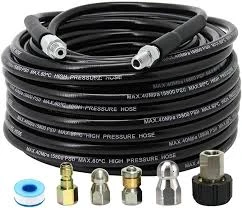Replace and Upgrade Your Power Steering Hose for Optimal Vehicle Performance
Changing Power Steering Hose A Step-by-Step Guide
Power steering systems are essential components of modern vehicles, making it easier for drivers to steer their cars with minimal effort. However, like any other part of a vehicle, power steering hoses can wear out over time due to factors such as heat, pressure, and exposure to various elements. When these hoses fail, they can lead to a loss of power steering fluid, resulting in difficulties steering and potentially causing serious damage to the power steering system. This article provides a comprehensive guide on how to change a power steering hose effectively.
Understanding the Power Steering Hose
The power steering hose is a flexible conduit that carries power steering fluid from the pump to the steering gear. There are typically two types of hoses high-pressure hoses, which carry fluid from the pump to the steering gear, and return hoses, which carry fluid back to the reservoir. Over time, these hoses may develop leaks due to cracking, bulging, or wear from constant movement.
Signs of a Failing Power Steering Hose
Before proceeding with a replacement, it’s important to recognize the signs of a failing power steering hose
- Fluid Leaks Puddles of power steering fluid under your vehicle indicate a potential problem. - Whining Noise A whining sound when turning the steering wheel may signal low fluid levels due to a leak. - Stiff Steering Difficulty steering, especially at low speeds, can suggest that the power steering system is not functioning properly.
Tools You’ll Need
To change the power steering hose, gather the following tools and materials
1. New power steering hose (consult your vehicle’s manual for the exact specifications) 2. Power steering fluid 3. Socket set 4. Wrench set 5. Pliers 6. Drain pan 7. Rags for cleanup
Step-by-Step Replacement Process
change power steering hose

1. Preparation - Start by parking your vehicle on a flat surface and turning off the engine. Engage the parking brake for safety. - Allow the engine to cool if it has been running.
2. Drain the Power Steering Fluid - Place a drain pan under the power steering pump. - Remove the power steering reservoir cap and disconnect the return line to drain excess fluid effectively.
3. Remove the Old Hose - Locate the high-pressure hose and trace it to the source points at the power steering pump and steering gear. - Using the appropriate wrench, loosen the fittings at both ends of the high-pressure hose. - Once the fittings are loose, carefully pull off the hose. It may take some wiggling, as fluid may still be in the line.
4. Install the New Hose - Take your new power steering hose and align it with the fittings. - Secure the hose by hand-tightening the fittings at both ends. Ensure not to over-tighten, as this can damage the fittings.
5. Reattach the Return Hose - If you removed the return hose, now is the time to reattach it securely. - Replace the power steering fluid reservoir cap.
6. Fill the System - Pour the appropriate power steering fluid into the reservoir until it reaches the recommended level.
7. Bleed the System - Start the engine and turn the steering wheel from lock to lock several times. This action helps to bleed out air trapped in the system. - Check for leaks while the engine is running, and top off the fluid as necessary.
8. Final Checks - After ensuring that there are no leaks and the fluid level is correct, put everything back in its place. Dispose of the old fluid and any waste material responsibly.
Conclusion
Changing a power steering hose is a manageable task for DIY enthusiasts and can save you money on labor costs. By following these steps, ensuring proper safety measures, and using the right tools, you can maintain your vehicle’s steering system in excellent condition. Always refer to your vehicle’s manual for specific instructions related to your model, and don’t hesitate to seek professional help if needed. Keeping your power steering system in good working order is essential for safety and comfort while driving.
-
Ultimate Spiral Protection for Hoses & CablesNewsJun.26,2025
-
The Ultimate Quick-Connect Solutions for Every NeedNewsJun.26,2025
-
SAE J1401 Brake Hose: Reliable Choice for Safe BrakingNewsJun.26,2025
-
Reliable J2064 A/C Hoses for Real-World Cooling NeedsNewsJun.26,2025
-
Heavy-Duty Sewer Jetting Hoses Built to LastNewsJun.26,2025
-
Fix Power Steering Tube Leaks Fast – Durable & Affordable SolutionNewsJun.26,2025

